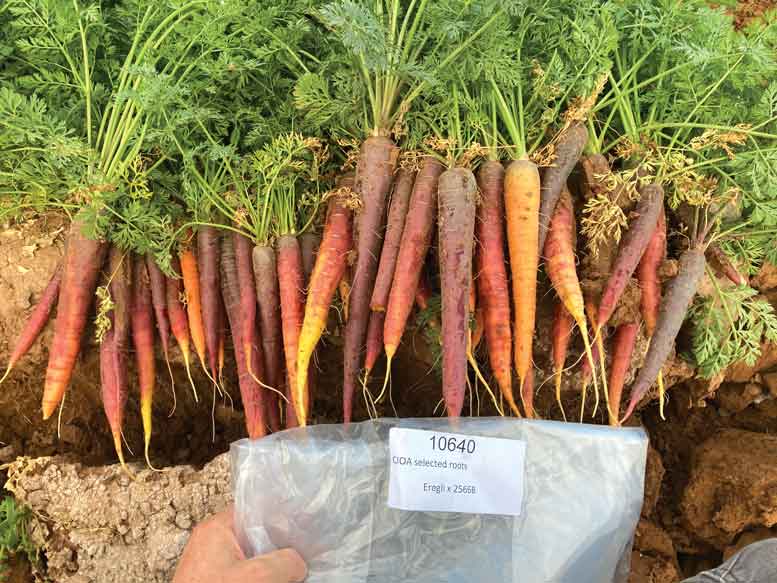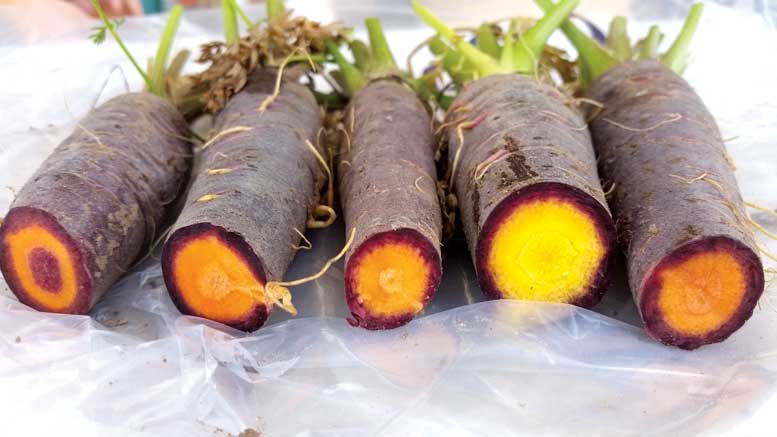|
Click to listen to this article
|
Although COVID-related restrictions kept most people in the industry from viewing the results of this spring’s USDA carrot hybrid trial in person, organizers say the crop was beautiful. And here are the pictures to prove it.
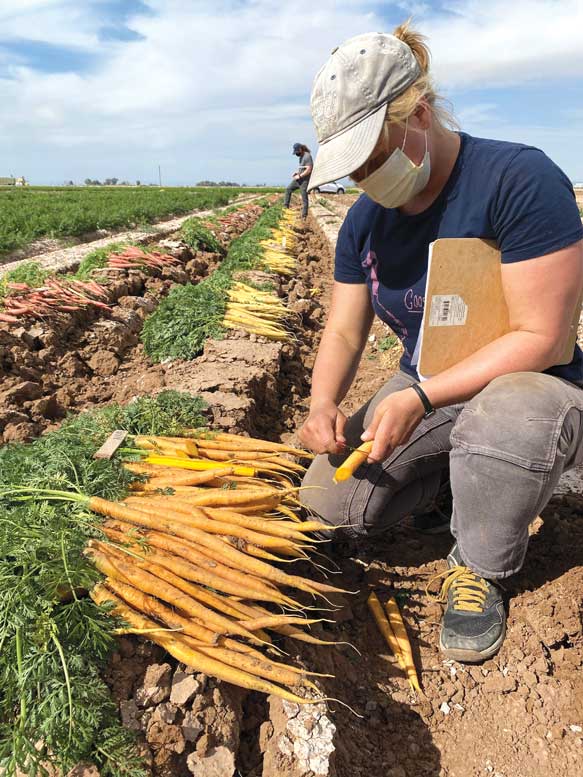
The carrot hybrid trial was planted at the University of California Desert Research and Extension Center in Holtville, California, on Oct. 27, 2020, and harvested in mid-March. The trial included more than 1,200 varieties, ranging from early- through advanced-generation breeding lines, as well as inbred lines mainly for hybrid development. Entries included cello types, cut-and-peel types for the processing industry, orange and purple high-pigment materials for use as industrial food coloring, and plant introduction materials from the National Germplasm Collection.
Although organizers were unable to hold the usual public field day this year, they did evaluate the trial at harvest. Carrots were scored on root length, shape, root smoothness, tip shape, uniformity, premature bolting, vigor and foliar diseases. Quality traits included color, flavor and texture. Evaluators also looked at top quality, strength and attachment.
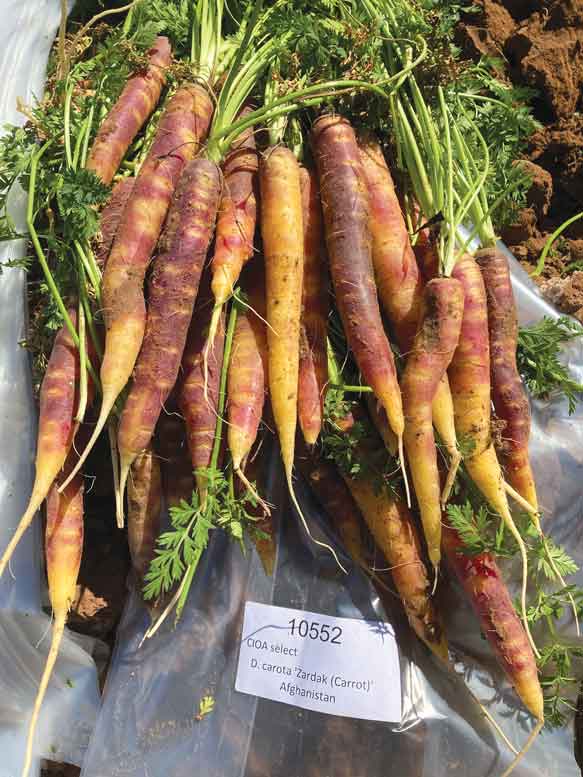
Laurie McKenzie, the Northwest research and education associate for the Organic Seed Alliance, has attended the USDA carrot hybrid trial the last six years. With USDA carrot breeder Phil Simon unable to be on site due to ongoing travel restrictions, McKenzie managed the trial harvest and selection this year.
Overall, the trial and the roots dug were beautiful, she said. There was very little disease present on the foliage or the roots. In particular, the novel colored carrot hybrid trial included some very promising looking hybrids, especially from Simon’s program, according to McKenzie.
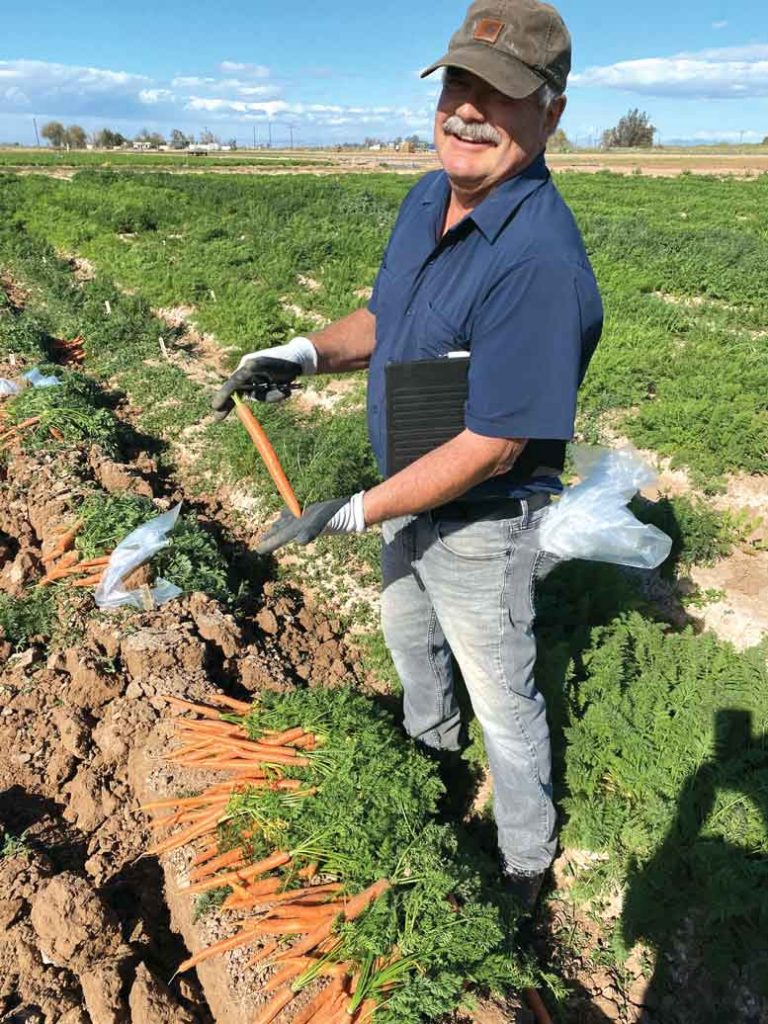
“Personally, I am especially interested in and focused on the novel colored carrots – both for open-pollinated and hybrid variety development,” McKenzie said. “In the time that I’ve been coming to [the trial], I’ve seen tremendous progress made on expanding and improving the cultivar development of colored carrots. Overall, I think there is really great progress being made in Dr. Simon’s program across the entire carrot spectrum and am both honored and humbled to work so collaboratively with him and his program.”
